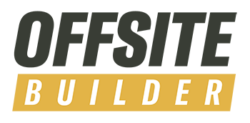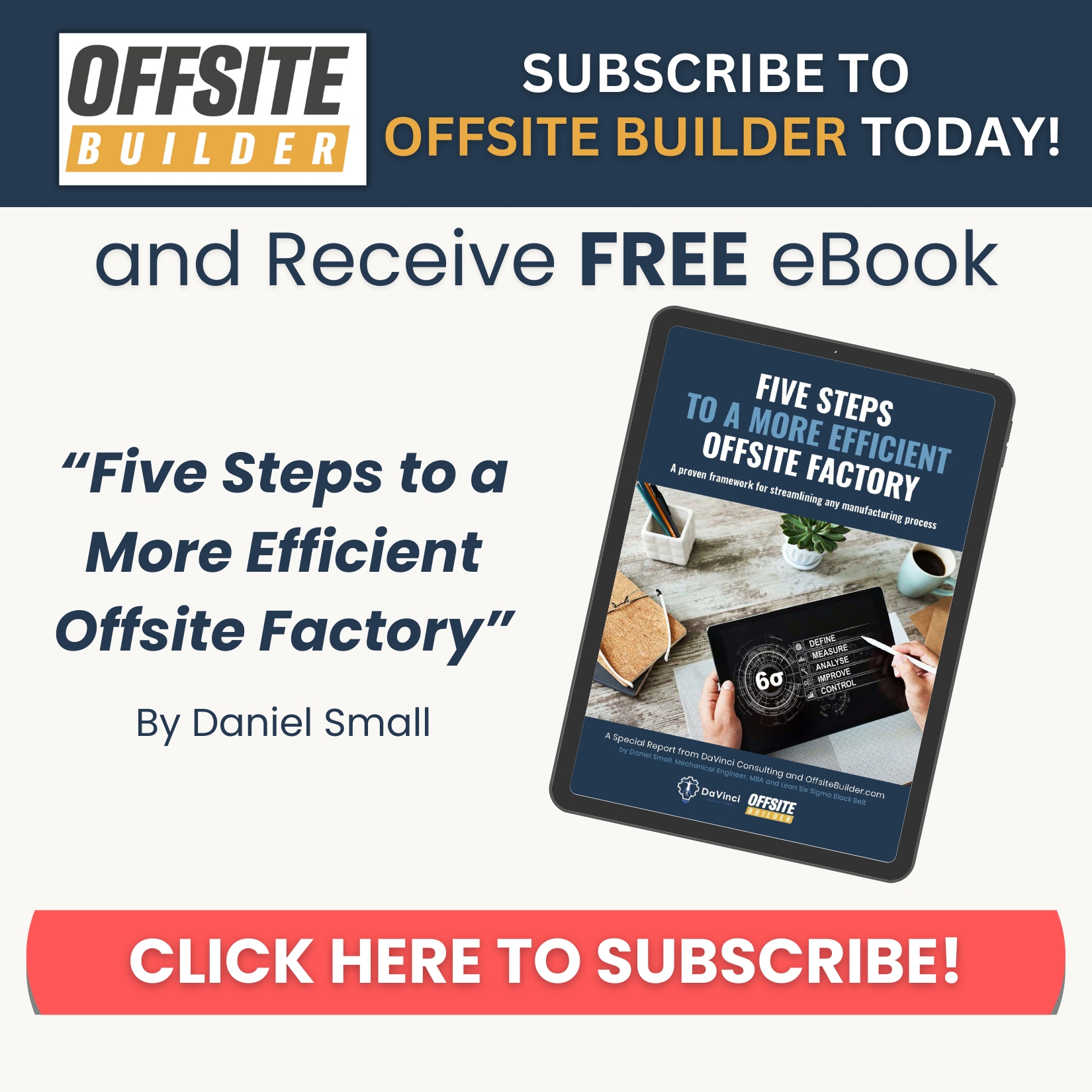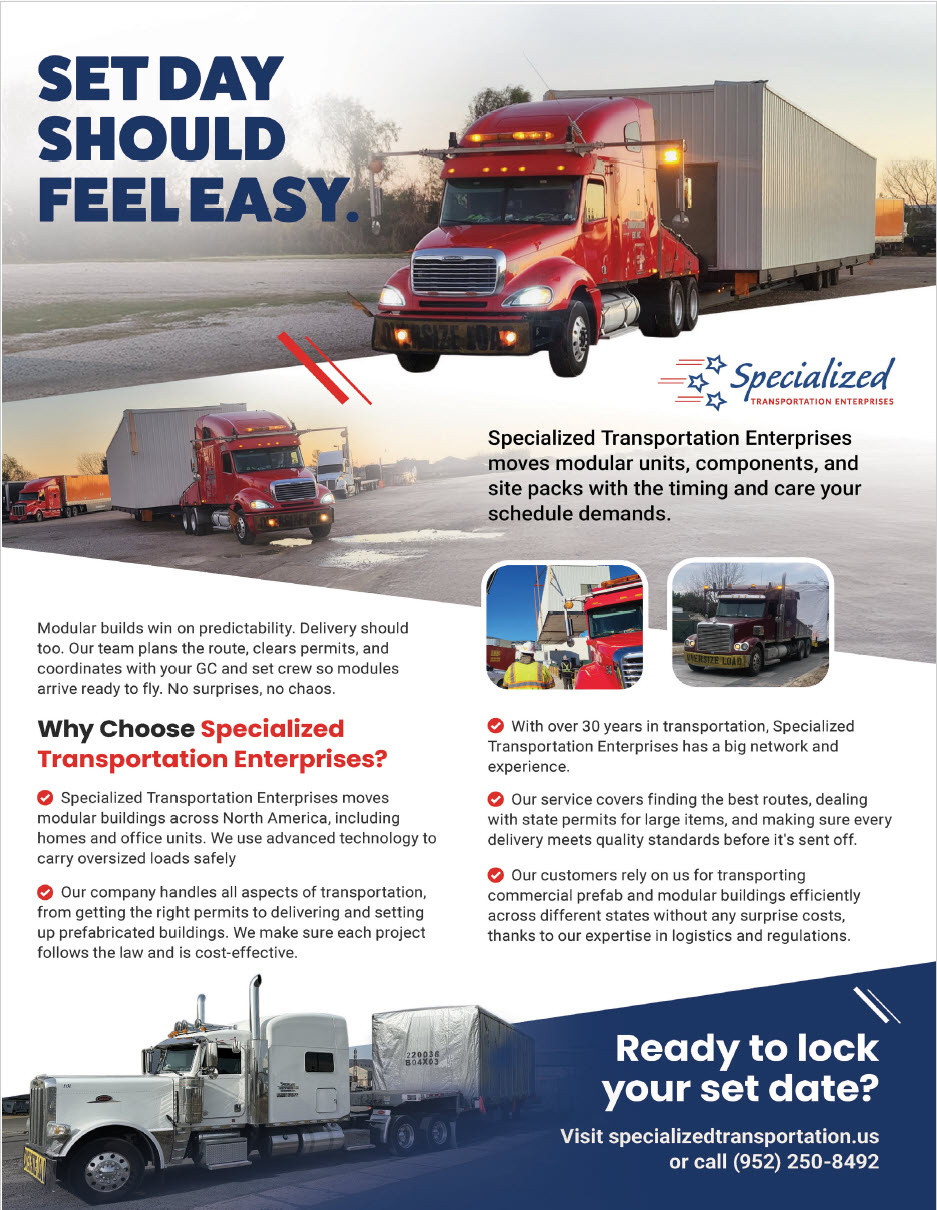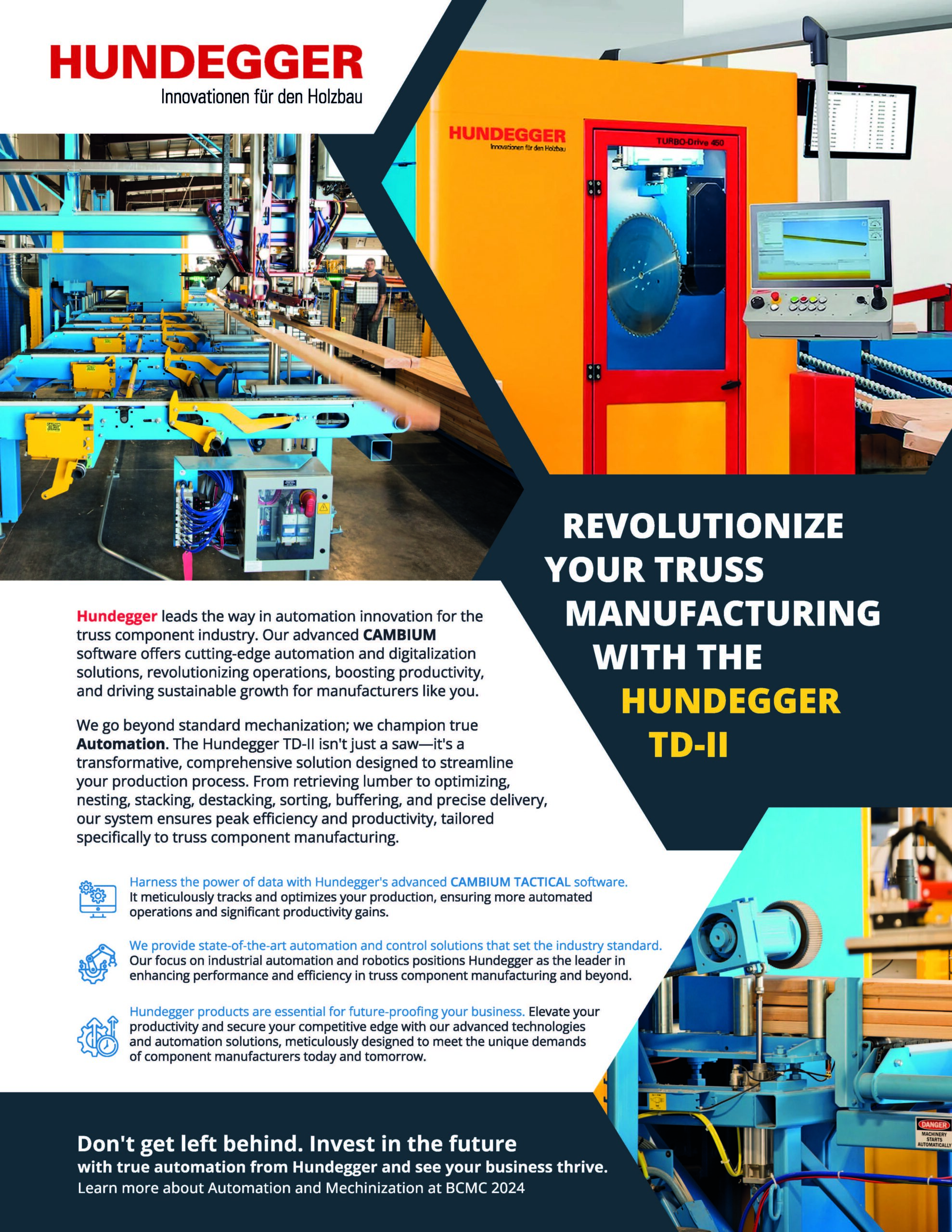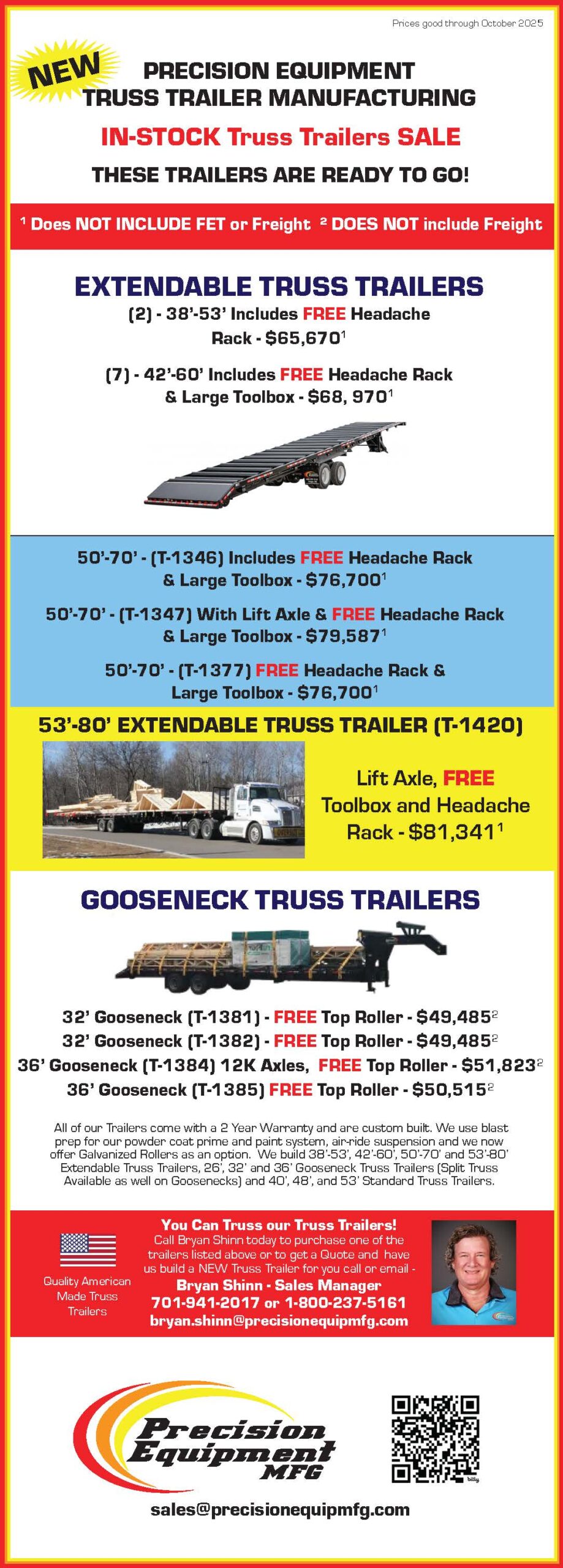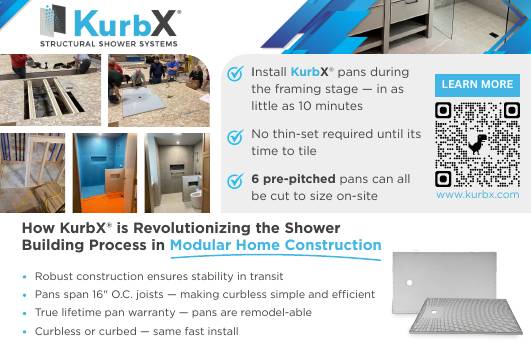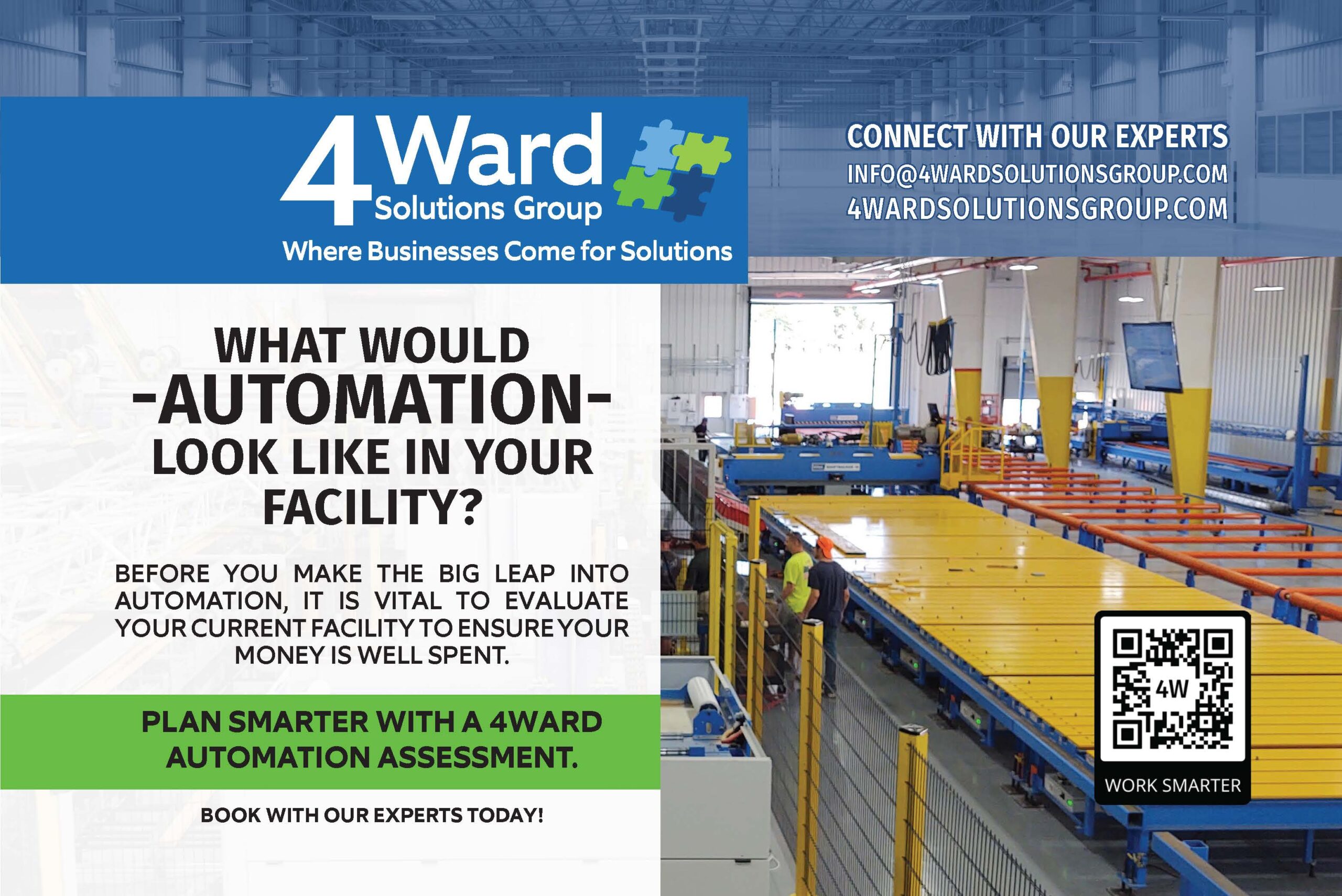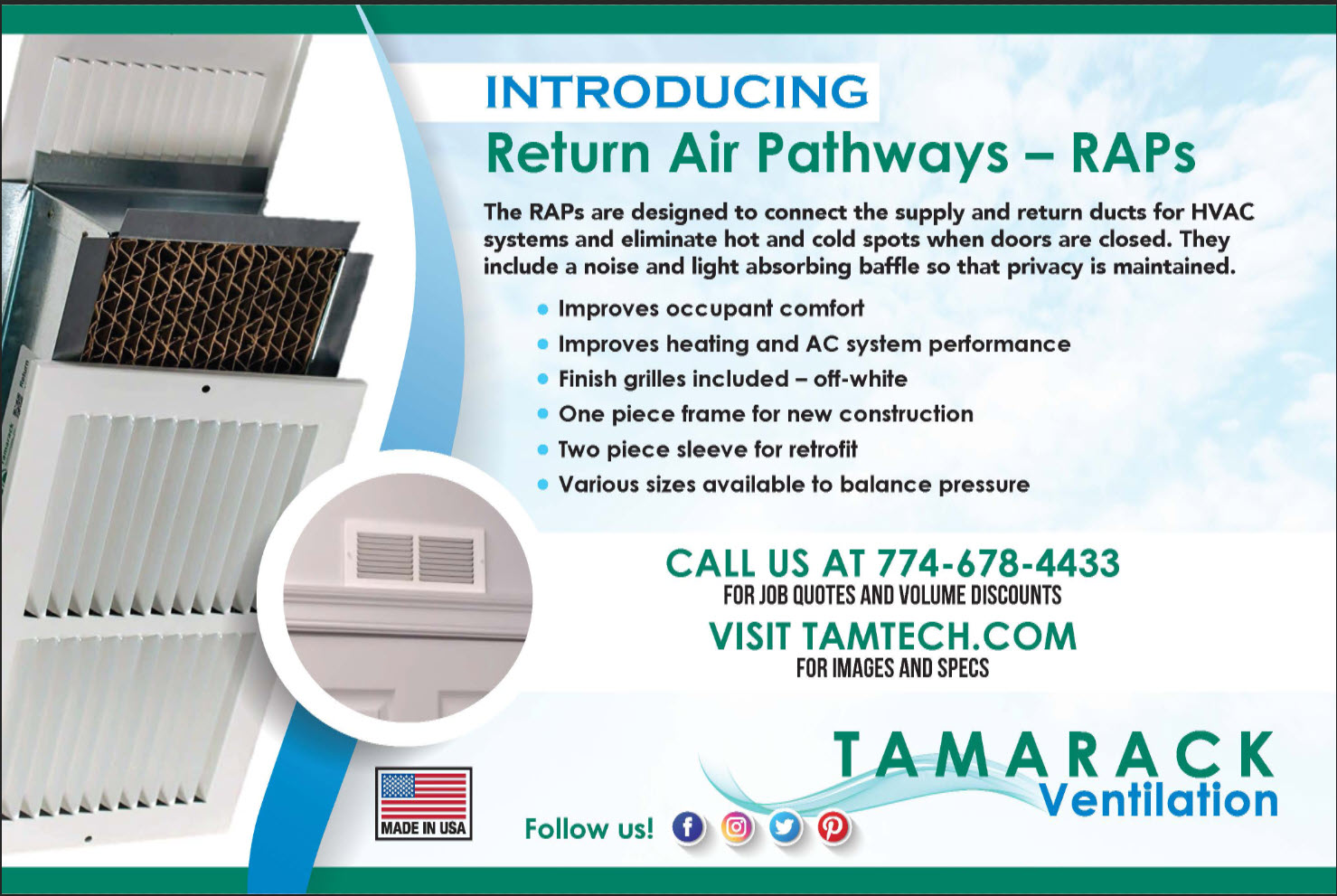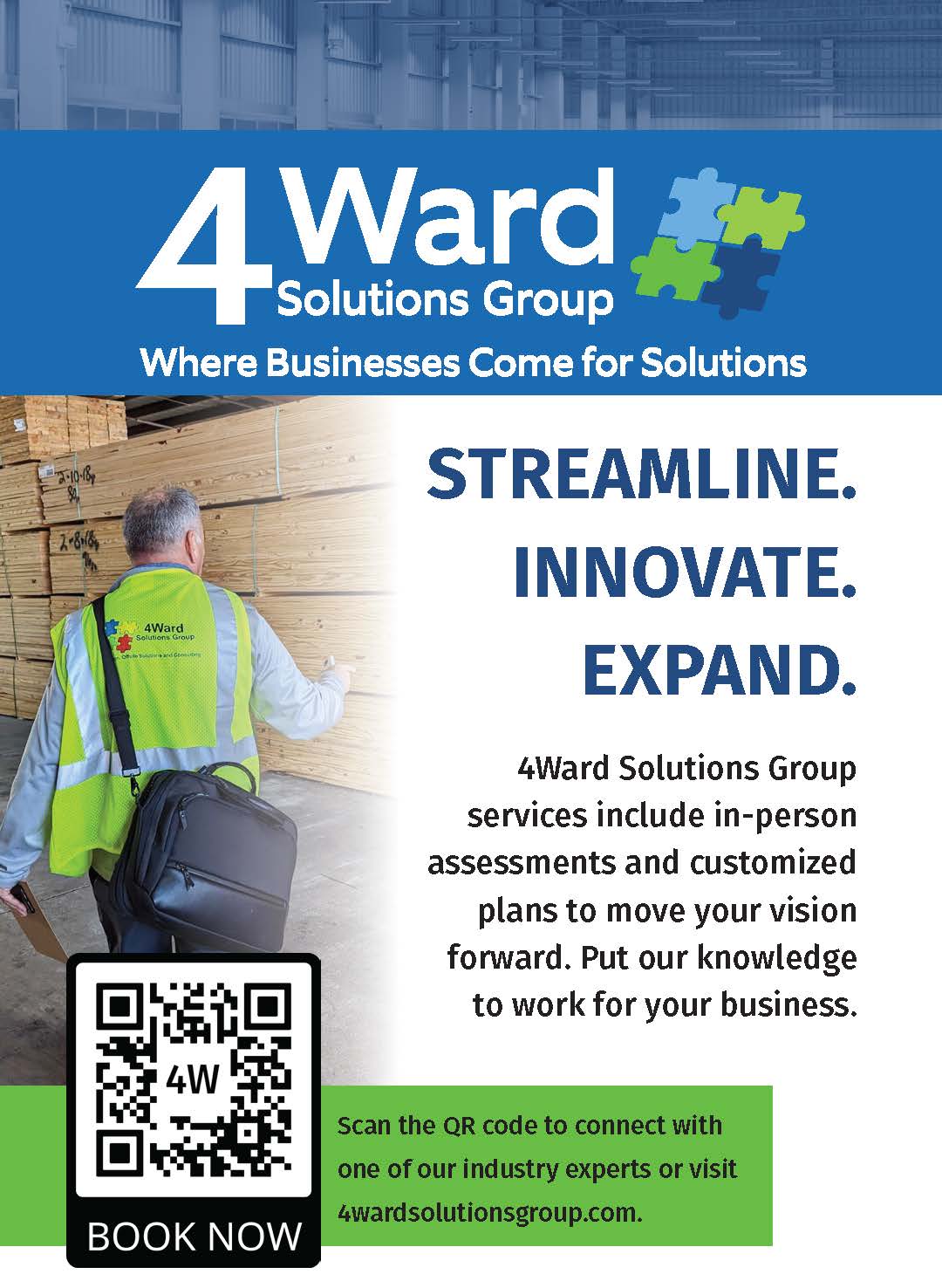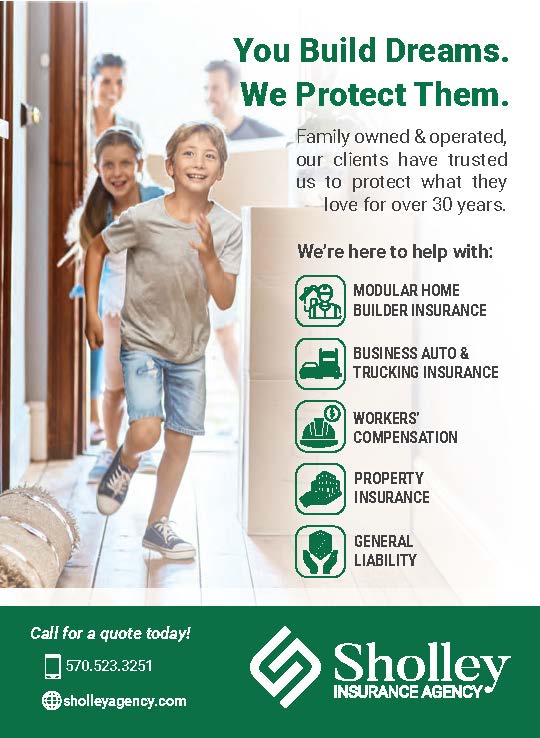Even if an offsite company lacks a long track record, its website can still be an effective lead generator.

One critical consideration for any modular or other offsite manufacturing startup is how best to attract customers. An important part of the answer is the company website. But, if your company lacks a track record or a recognizable brand, how do you structure a website that motivates prospective customers to contact your team?
Web development companies use different methodologies and philosophies to attack this problem. Some prioritize user experience while others emphasize aesthetics and branding. Some web developers take a functional — even minimalist — approach to design, while others prefer a more complex aesthetic.
Jose Ferreira Jorge, Founder of Box Build Branding, is an advocate for the user-experience approach, which he believes is the most effective way to earn trust from site visitors. He says it’s a good tactic for any company, but especially for a startup that lacks a recognizable brand. Of course branding is important, but its chief role is to maintain and reinforce trust. A new company needs to focus on supporting and building its brand.
Jorge came to this conclusion after traveling the world and working in sales for software and real estate companies. In 2024 he founded Box Build Branding, a company that serves offsite construction firms with website design and other digital growth strategies.
Although Jorge is a native of South Africa who now lives in Germany, he is focusing on the US market. The reason, he says, is that while offsite construction is global, America has one of the world’s most entrepreneurial cultures. “The mentality among US founders is that they’re willing to invest money into efforts that will help produce revenue,” he says.
He started out by building websites for container companies but has since broadened his efforts to include all types of modular and prefab concerns. He is even in talks with one industry association.
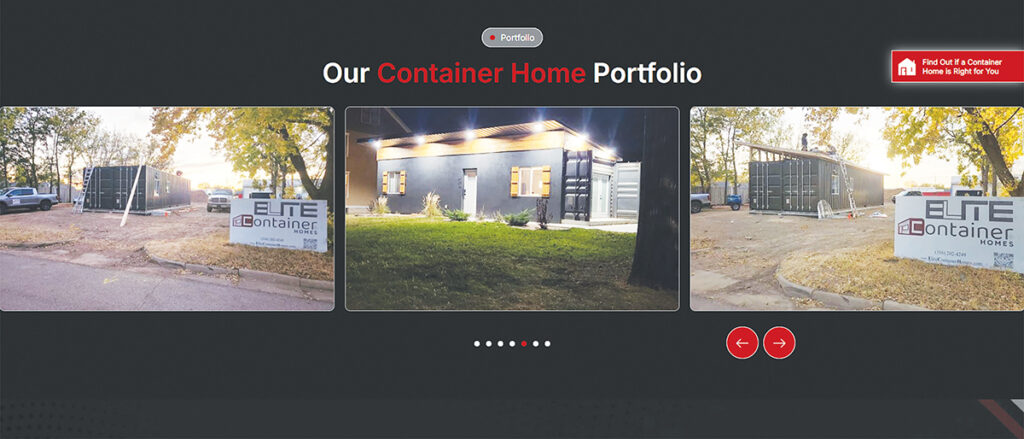

Making Impressions
According to Jorge, if a company is young and needs to grow its market share, then the website’s main job must be lead capture. If every element is designed to build trust among site visitors, they will be more likely to contact the company. His websites are built on a custom WordPress template for easy editing and the content is organized in a systematic order with the goal of building and reinforcing trust as users move down the page.
The first step on this path is the “hero” section, the prominent area at the top of the page. It needs captivating images, a clear headline and an attention-grabbing call-to-action that conveys the main value the company offers.
The site has mere moments to connect with visitors. In a 2014 study on eye tracking published by the Missouri University of Science and Technology, participants required only two-tenths of a second to form a first impression of a website. They spent just 2.6 seconds more scanning the site before focusing in on a particular section.
According to Jorge, a website’s sections need to include trust-building elements like media mentions, bios of the team, customer testimonials and portfolio photos.
Offsite companies should also include descriptions and photos of their process for those who are unfamiliar with this way of building. This content will help reinforce their unique value. “Many offsite companies fail to differentiate themselves online by not drilling down to the essential elements of who they are, what they do and the services they provide,” says Jorge. “We highlight their expertise, as well as the fact that they are doing something innovative, which a lot of people like.”
One of Box Build Branding’s first customers was Elite Container Homes in Wichita, Kansas. To help sell customers on the container home concept, the website includes a link to a free e-book, blog posts and a build-cost estimator. Customers can even rent an Elite home Airbnb as a try-before-you-buy step.
Jorge insists that social media icons need to be at the bottom of the page, not the top. “Those icons can take people out of the website, so we don’t want them to be the first thing visitors see,” he says.
One website section where he says a lot of web designers fall short is FAQs. It’s important for FAQs to answer the specific questions that prospective customers are typing into web searches. “We try to have actual reviews linked to the page, so users are led back to Google, Facebook, or Trustpilot.”
This is particularly important for offsite builders. For instance, prospects might want to know if modular or container homes are safe, how much they cost, or what the maintenance requirements are. “A lot of companies don’t write FAQs to align with what people are asking Google,” says Jorge. “Basing the questions on customer search terms also helps with SEO.”
Google searches can also serve as a guide when writing other content, including web copy, e-books and blog posts.
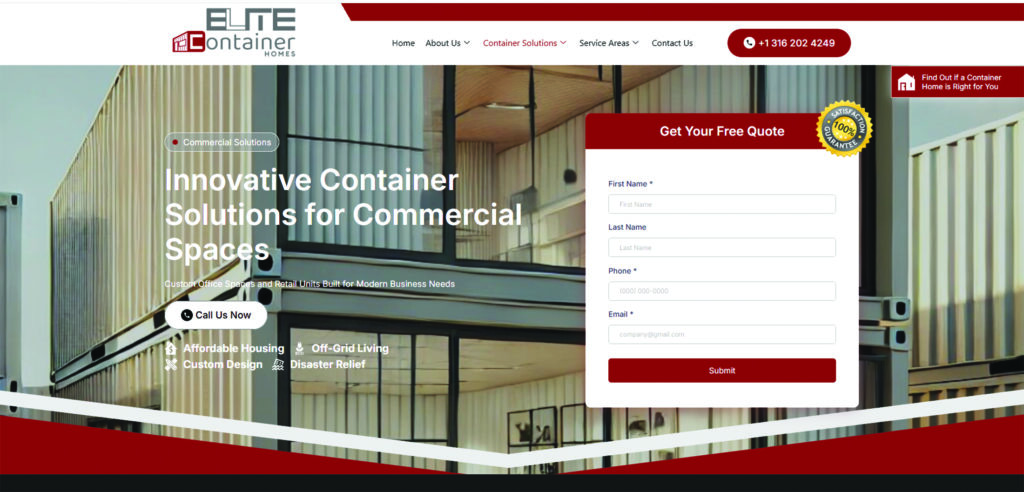
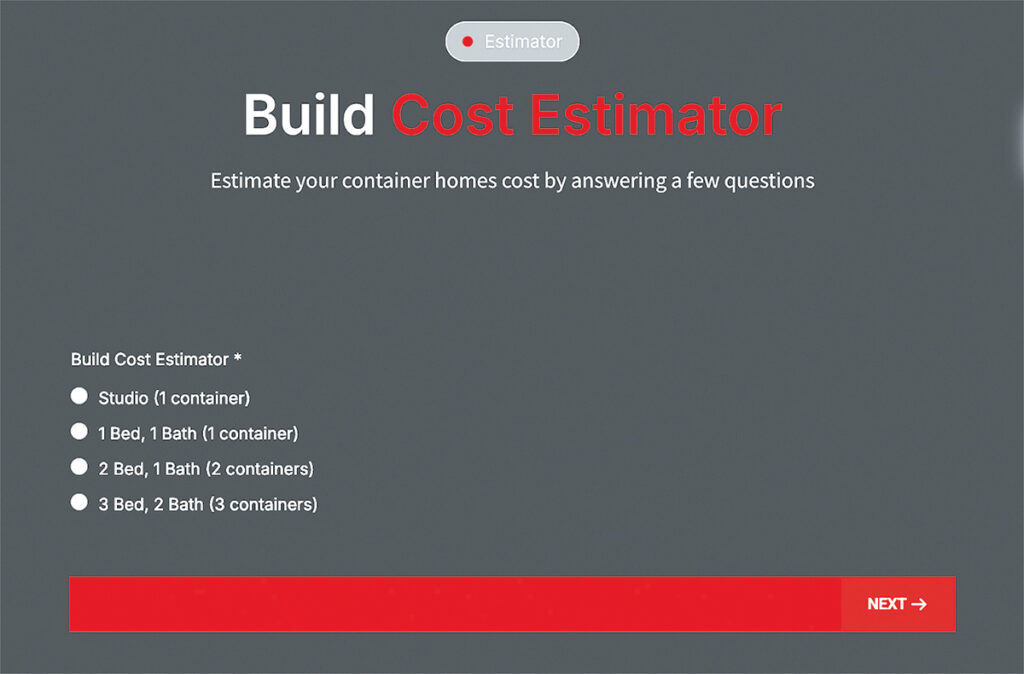
Gathering Elements
Jorge’s process begins with discovery and research, which includes getting to know a client and their business. An onboarding document is completed.
The document starts with obvious questions about the company, the product, the market area and the mission and vison, but it also asks for other elements that might help build credibility.
“We might want to highlight business relationships with industry professionals and entities including architectural firms, public agencies, general contractors and other manufacturers,” says Jorge. Affiliation with industry organizations will also help position the company as a serious player. “For instance, do they belong to the Modular Building Institute, the Building Systems Councils, or any other industry groups whose badges we can show?”
He creates visual headers using AI programs such as Midjourney and ChatGPT. Each element on the page reinforces the company’s message and helps users decide if they’ve come to the right place.
Each element needs to speak to the company’s target customer, with the goal of converting users into leads. “A great looking website is useless without traffic,” Jorge says. “It needs to attract the right audience; it needs to build trust and convert visitors into customers.”

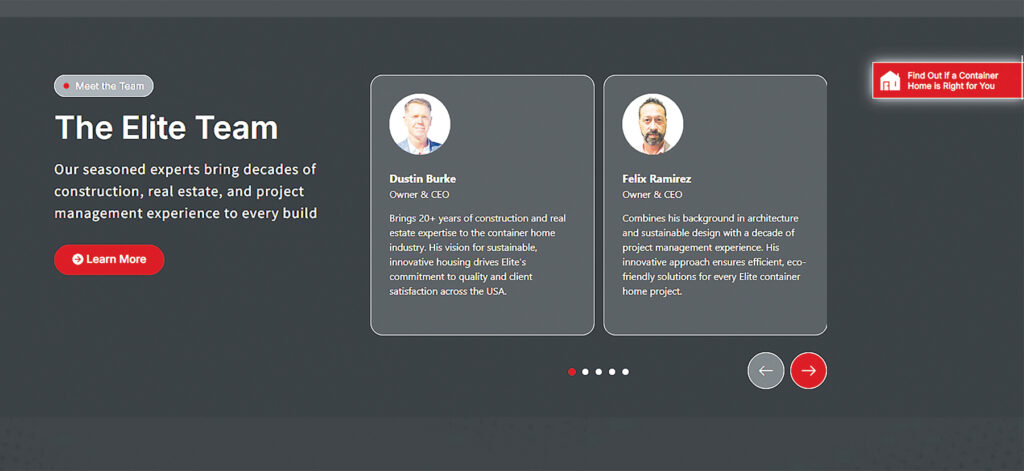
Tracking Results
This approach sounds good, but does it deliver on its promise? According to Dustin Burke, Co-Owner and CEO of Elite Container Homes, the answer is yes: Jorge’s work has had a positive impact on the business.
Burke was impressed by Jorge’s deep understanding of branding in offsite construction. “Jose demonstrated a clear ability to create functional, visually appealing and conversion-optimized websites,” Burke says. “He has a desire to see our company grow. Therefore, it felt like we were gaining a valuable team member, not just another expense.”
Burke adds that Jorge played a crucial role in structuring the website for usability, SEO and lead generation. “While we provided feedback, Jose’s expertise in layout, call-to-actions and user experience guided the final design.”
Elite Container Homes (Elite) had a basic website before, but it wasn’t optimized for conversions. “Since launching the new site, we’ve seen a significant increase in inquiries and engagement,” Burke says. “We attribute this to the strategic layout, SEO optimization and lead capture features that Jose implemented.”
Jorge says that Elite’s new website generated more leads in January and February of 2025 than it did for all of 2024. “It shows that even if a company doesn’t have a long history, it’s website can still check the boxes needed to make a difference when it comes to attracting customers.”
In addition to the website, Google ads and local service ads are used for instant leads. Social media marketing is used to establish authority and credibility.
The increased traffic and lead generation have created another problem though, albeit an enviable one. Burke says he underestimated the impact of his company’s new website and Box Build Branding’s SEO efforts. “We should have anticipated the increase in orders and developed a plan to manage them more effectively,” he says.
Reed Dillon is a content brand specialist, marketing consultant and freelance writer that focusses on offsite and new construction. He is the owner of Creative Brand Content in Moneta, Virginia. Contact: [email protected]
Images Courtesy of Box Brand Building.
